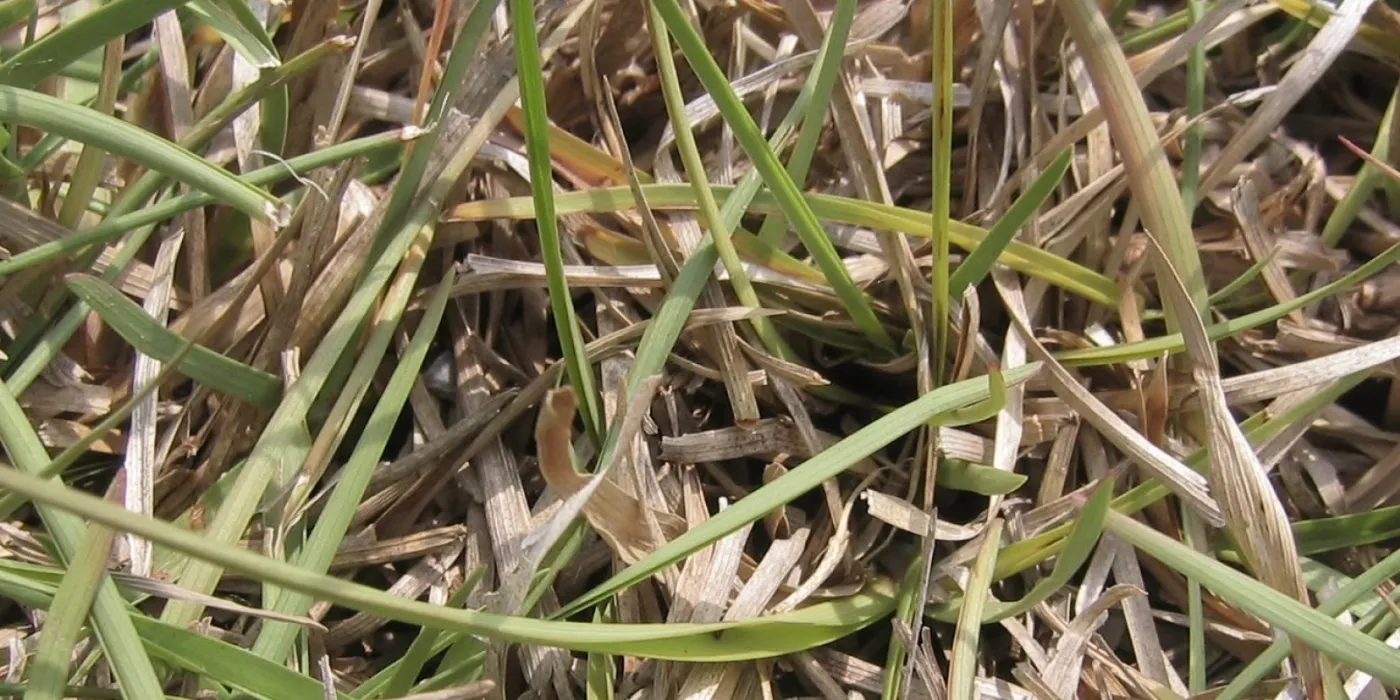The old saying "April showers bring May flowers" was said by someone who didn't live near Gainesville Florida. In our area, April is consistently the driest time of year. It’s when the spring season starts and Gainesville yards begin to heat up, but the summer afternoon storms and humidity haven't come yet.
This dry weather also brings in a past "Pest of the Month," which is Drought Stress. Although the word 'pest' is typically used to describe an insect such as chinch bugs or webworms, the term is actually used to describe anything that is 'pestering' the lawn, and this month it is drought stress.
As water becomes limited, your turfgrass will give off signs that it’s in need of watering. If you spot these warnings in advance, you can alter your sprinkler schedule to avoid drought stress and keep your lawn green and healthy.
Here are a few warning signs to keep in mind:
Color:
If the color shade of your grass is just grayish and lacks color, especially in full sun areas, it could be suffering from drought stress. Unless you take action, it could turn brown and die sooner rather than later.
Footprints:
Walk around in your lawn and take a moment to turn around, look at your path, and search for footprints. If you see prints clearly laid out in your grass, you are likely dealing with a drought stress problem.
Shaded Areas:
Look at the shaded areas of your lawn. Is the grass healthy and green in those areas? What about in the areas of your lawn exposed to the sun? If there is an obvious difference between the two—with the sunny areas showing patches and brown spots—this is a definite sign of drought damage, because the shaded areas are more protected from the heat.
Folded Blades:
The best way to identify drought stress in turf is finding leaves folded in half. (A seen in the image above)
This issue is commonly found in the sunniest areas of your lawn, and the folded blades are actually trying to reduce their sun exposure to protect itself from further stress.
To avoid these issues, make sure to service your irrigation system and bump settings back up for spring, even if it's just for a short time to get your lawn through the dry spell.
You can find more information about Gainesville Irrigation Settings here.
The biggest mistake homeowners make with irrigation settings is assuming they can be "set and forget." This couldn't be further from the truth. Irrigation systems should be cut back drastically in winter, turned up for our dry season and to help redevelop strong roots in spring, and then average out in summer as the afternoon storms and humidity come in to play. Leaving the settings constant all year will set you, your lawn, and your water bill up for failure.
When your lawn shows signs of drought stress, we also recommend mowing holding off on mowing or mowing at a higher height than normal, this will help the grass hold moisture and color.
If you need assistance with your lawn’s irrigation and fertilization needs, The Master’s Lawn Care can help. Please contact us today for a free lawn consultation to help develop a plan custom-tailored to the specific needs of your lawn.
Related Reading:
5 Tips to Avoid Drought Stress
How to Change Your Irrigation Timer Settings
Tips for Watering Your Gainesville Lawn


